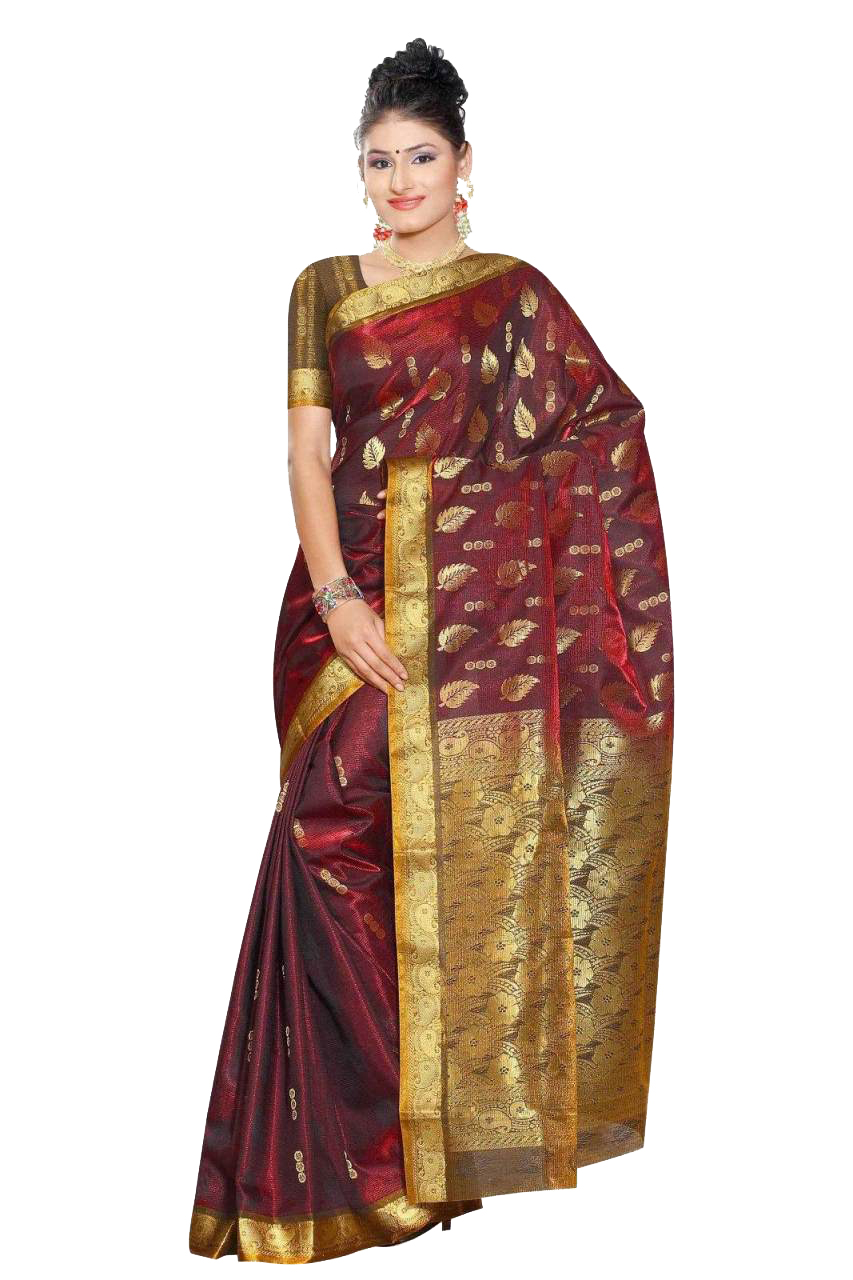Source(google.com.pk)
Sarees are the epitome of Indian diversity and culture. Saree has its own grace and charm. The woman clad in a saree looks elegant and gorgeous compared to any other outfit. There are many varieties and variations of saris found in India, depending on the region, fabric, occasions and draping styles. You might be surprised to know, the history and origin of saree is as old as Indus valley civilization.
Recently I happen to learn about two new kinds of Sarees - Chanderi and Maheshwari from Madhya Pradesh. Then I just looked back into my collection of this 6 yard wonder. Here I have put together a collection of sarees from my wardrobe and the ones I wish to own someday along with other traditional sarees found in different regions of our country. Please do contribute if you have a famous saree of your region if its missing in this list
Sarees from North India
1. Banarsi(Banaras) :This sari has a strong Mughal influence in its design and is a must for a bride. The intricate intertwining floral and foliate motifs, kalga and bel are usually found in the weaving.
A characteristic found along the inner, and sometimes outer, edge of borders is a narrow fringe like pattern like a string of upright leaves called jhalar. This is a signature of Banarasi brocade.
2. Jamawar Saree (Kashmir) : The glory, and the colors of nature captured skillfully on cloth characterize the famous Jamawars of Kashmir. Jama means robe and war is yard. King and nobles bought the woven fabric by the yard, wearing it as a gown or using it as a wrap or shawl. But today the saree has undergone many changes. Many of the Jamawar sarees now have matching silk shawls attached to them, creating elegant ensembles fit for royalty. New things are being tried out to make jamawar more popular. Saris are woven equally in silk and pashmina. They are also embellished by the incredibly minute aksi embroidery. Some say, Jamawar saree was originated in Uttar Pradesh. These sarees are embroidered with zari threadwork. The popular theme is a jacquard weave in ‘meena’ colours like orange and green.
3. Chikan Saree : Chikan embrodary is a specialty of Lucknow, the city of Utaar Pradesh. It is also called Lakhnavi Chikankari Saree. It has certain grace and elegance, which ensures that it never goes out of style. Generally the sarees are in light earth colors or pastel shades.
Other Sarees from this region :
This region also produces famous sarees such tanchois, amru brocades, shikargarh brocades and tissues. Abrawans (literally meaning flowing water)- Tissue sarees, usually woven with the finest silk thread are also quite popular.
Kincab or Kinkhwab sarees are the most popular of the brocades and are so covered with the zari patterning that the underlying silk cloth is barely visible.
Sarees from South India :
1. Kancheevaram: Kanchipuram is a town in Tamil Nadu with more than 150 years of weaving tradition. These sarees are characterized by gold dipped silver thread that is woven on the premium quality silk. Kanjee silk is thicker than almost all other silks, and is therefore more expensive. The heavier the silk, the better the quality. Peacock and parrot are the most common motifs. Though lightweight kanjee sarees are popular as they are easy to wear and cost very little, the traditional weavers do not like to compromise
Kancheevaram Saree
2. Konrad Saree : The Konrad or the temple saree is also a speciality item from Tamil Nadu. These sarees were original woven for temple deities.
These sarees have wide borders and have designs of elephants, peacock as well as many other natural elements which are spread all over the length of saree. The body of the Konrad sarees do contain a woven pattern usually checks or stripes.
3. Mysore Silk Saree : One of the most sought after sarees in South India is Mysore Silk saree. This traditional saree from Karnataka are made of pure silk. The unique characteristic of this saree lies in the shimmering effect of the material. They are admired because of the fabric, rich vibrant colors and soft feel.
4. Pochampally Sarees : Named after a small town Pochampally near Hyderabad, AP, the sari has something unique about it. The sections of weft and the warp yarns are tied first and then resist dyed to achieve the pre-fixed design pattern and then interlaced to get the wonderful Pochampally Ikat saris. These saris are woven in silk, cotton and silk-cotton mixes of bright colours. Apart from Andhra Pradesh, Gujarat and Orissa are the hubs for producing Pochampally ikat sarees.
South Indian Saree Indian Sarees 2014 Designs Online For Kids Images Design Patterns Online Shopping Wedding Blouse Designs

South Indian Saree Indian Sarees 2014 Designs Online For Kids Images Design Patterns Online Shopping Wedding Blouse Designs
.jpg)
South Indian Saree Indian Sarees 2014 Designs Online For Kids Images Design Patterns Online Shopping Wedding Blouse Designs

South Indian Saree Indian Sarees 2014 Designs Online For Kids Images Design Patterns Online Shopping Wedding Blouse Designs

South Indian Saree Indian Sarees 2014 Designs Online For Kids Images Design Patterns Online Shopping Wedding Blouse Designs

South Indian Saree Indian Sarees 2014 Designs Online For Kids Images Design Patterns Online Shopping Wedding Blouse Designs

South Indian Saree Indian Sarees 2014 Designs Online For Kids Images Design Patterns Online Shopping Wedding Blouse Designs

South Indian Saree Indian Sarees 2014 Designs Online For Kids Images Design Patterns Online Shopping Wedding Blouse Designs

South Indian Saree Indian Sarees 2014 Designs Online For Kids Images Design Patterns Online Shopping Wedding Blouse Designs

South Indian Saree Indian Sarees 2014 Designs Online For Kids Images Design Patterns Online Shopping Wedding Blouse Designs

South Indian Saree Indian Sarees 2014 Designs Online For Kids Images Design Patterns Online Shopping Wedding Blouse Designs
No comments:
Post a Comment